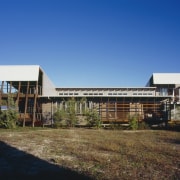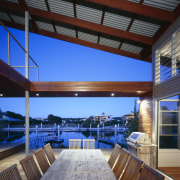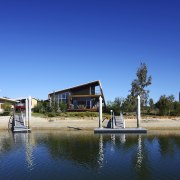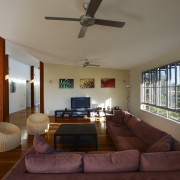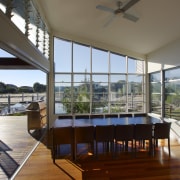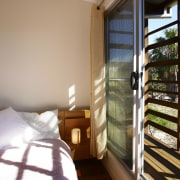Architectural origami
Nothing is quite as it seems in this new beach house roofs turn down to form walls, corners open up and walls fold into decks and floors, effectively wrapping the house in a rich timber exoskeleton
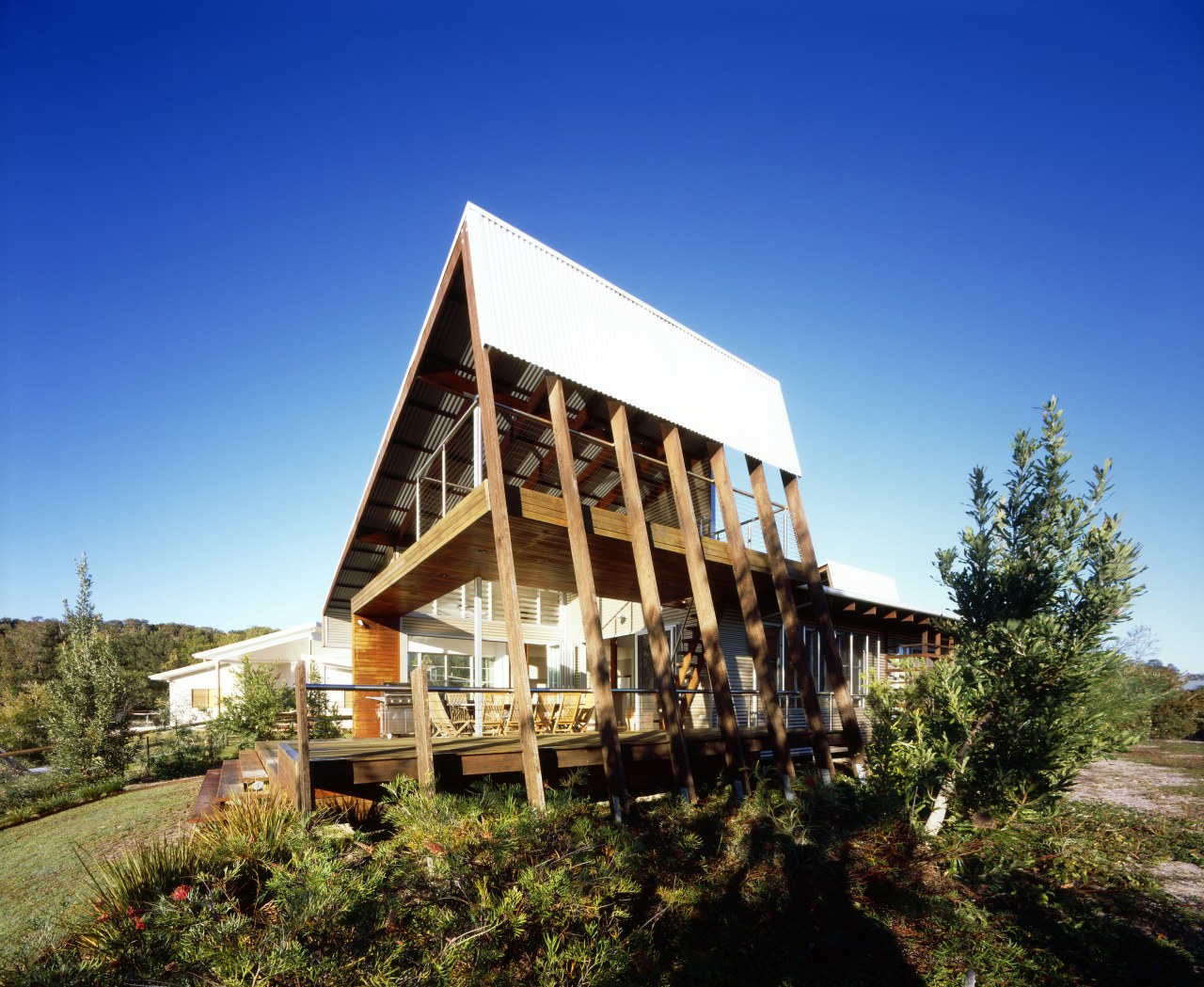
Developing a prime waterfront site gave the designers of this beach house the opportunity to push the boat out in more ways than one. The site, which is accessed by boat and a private pontoon, was selected for Kevin Hayes Architects' own beach property.
Architect Elizabeth Anderson says the team needed a spacious, open-plan house that would be able to accommodate 16 people comfortably. Environmental sustainability, including maximising natural ventilation, was a key driver for the design. The architects also wanted to create an unconventional interpretation of the traditional Queensland beach house.
"To this end, the house was designed to celebrate the two primary building materials in the region timber and aluminium sheeting and reinterpret the way they interact," says Anderson. "It was also designed to be a structural expression of these simple, honest materials."
Anderson says that while the aesthetic of the house is a new direction for the local community, the use of sympathetic materials continues the traditional beach house vocabulary.
"The house was also built on the touch the ground lightly' principle," she says. "Due to the sensitive nature of the island environment, it was important to not interfere with the water flow across the site, and the habitat of the native animals. Consequently, the house is raised 600mm off the ground on timber stumps."
A richly stained timber exoskeleton wraps around the house. This in turn is wrapped by modern metallic Colorbond sheeting, with both materials creating a dramatic play of shadows.

"The edges of the house are not clearly defined. They reach out into the land to merge with the landscape, enhancing the outdoor connection," says Anderson.
Relationships between building elements have also been explored, she says.
"Roofs turn down into walls, columns become walls, corners are exploded, roofs project and recess, and walls fold into decks and floors, just as the landscape is folded into crevices and projections.
"This provides a sense of movement and excitement. It also plays with the idea that things are not always what they are first perceived to be, and that single elements can have multiple applications and understandings."
Anderson says the play between light and shadow is another motif. Screens and deep overhangs not only provide shade, but also give greater visual depth to the facades, and contribute to a more lightweight look, reducing the apparent bulk of the house and providing intrigue.
The architect says the nature of the site, with its pontoon access, provided a challenge to the traditional concept of a front door. The main entry is via a sprawling staircase leading to the front deck.
"Fortunately, the site has an eastern orientation, which is an ideal aspect for the main deck, dining and living areas."
An oversized corridor connects the living spaces and forms a spine through the building. Exposed structural timber columns reinforce the scale of the passage, which has a double-height ceiling. The corridor also features high clerestory windows that allow for generous cross ventilation and do away with the need for air conditioning. Similarly, louvres and bifold windows bring cooling breezes into the living area.
"All the interior spaces are large and airy," says Anderson. "The main living area is 7m x 8m, and the deck is a natural extension of this room. It is possible to join up the dining and outdoor tables to create one long banquet table."
The gourmet kitchen was designed for entertaining and can accommodate several people working at the same time. Two refrigerators are positioned outside the main work zone, to allow easy access to drinks and snacks.
In addition to five bedrooms, including a bedsit, the multiple decks around the house are designed as retreats many feature private day beds. There is also a large loft deck above the main deck.
Credit list
Structural engineer
Interior designer
Kitchen manufacturer
Flooring
Lighting
Appliance supplier
Refrigeration
Dining furniture
Story by: Colleen Hawkes
Home kitchen bathroom commercial design
Reflection and repose
9 tile shapes and finishes that think outside the square
White cloud, blue sky


